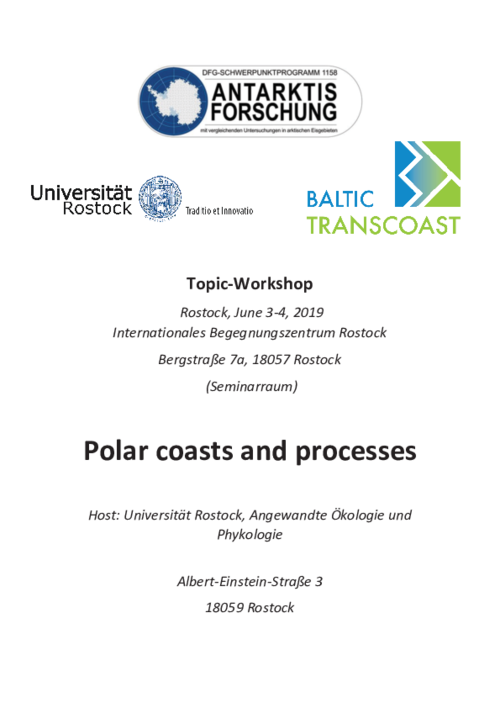Aims and scope of the workshop
The coastal zone is heavily impacted by geomorphological and climatic processes as well as anthropogenic influences. The fluid dynamics, cycling and transport of essential and trace elements and linkages to organisms at the land-ocean interface are closely related. Until now these interactions are not well understood hampering future planning and management.
Polar and subpolar coasts are distinctive because of extreme seasonality and the presence of ice (predominantly tidewater glaciers, ice shelves, sea ice, and ground ice). Sea ice plays a protective role but may be either erosional or constructive when mobile. Wave activity, though effective mainly during the short summer, imposes a strong morphological signature on most sedimentary coasts. Unlithified coasts in permafrost are widespread on the Arctic Coastal Plain, where combined thermal and mechanical processes promote rapid erosion in ice-rich deposits. Antarctic and sub-Antarctic coasts are mainly dominated by rock or ice, as are parts of the Arctic coast.
Registration to: spp-antarktisforschung@uni-rostock.de

